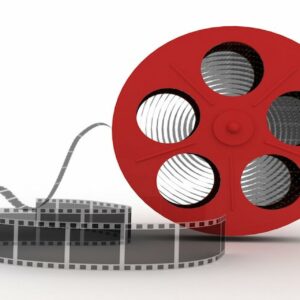The world is rapidly changing, and businesses must be able to adapt quickly to meet the demands of their customers. Data centers play a vital role in this process by providing storage and networking for apps, information, and content.
Data center architecture enhances different services’ efficiency, expandability, and versatility. It can also help reduce energy costs and provide a greener environment.
Space
As a modern enterprise, you need a data center to provide the technology infrastructure that helps you store, process and distribute your data. You can compete in today’s marketplace with the right data center architecture.
When designing your data center, you must consider how it should be scalable over time. This means it should have room to grow in space, power, and cooling while still being efficient enough to minimize costs until you’re ready to add more capacity.
A data center architecture in total capacity depends on the server hardware and ancillary equipment installed in each rack. It also includes the wiring and cabling used to connect servers and the network.
The size of a data center is also determined by how much data it needs to store, process and distribute. This can include large volumes of high-definition video, audio, and other digital content.
Typically, the most important data centers can contain as many as a thousand racks or cabinets, each representing a specific type of hardware and having all the requisite wiring and cabling between the servers. These can be organized in closet-like rows or on the open floor of a single data center.
For small businesses and startups, a basic 1U allocation of space is often sufficient to handle their initial needs. As the company grows, however, it might need to expand its data management requirements or invest in additional servers.
Another common approach is to use a colocation facility that offers private suites and leased space within the data center. This type of facility is a good option for companies looking to have more control over their environment, and it can be an excellent way to save money on space and electricity costs.
Some companies even go so far as to lease their own space in a colocation facility, giving them more freedom in managing their assets and resources. It’s also easier to scale up or down their resources than it would be if they built their facilities.
Power
Data centres require a stable, reliable power supply. A faulty power system can cause damage to the data center and lead to downtime and other problems. Understanding the power supply of a data centre is essential in helping businesses make informed decisions when choosing a facility.
A common mistake when designing a data center is underestimating its needed power. This leads to unused capacity and unnecessary costs. It can also disrupt the operation of the data center when power demands exceed available resources.
Incorrect power estimation can also be caused by a data center’s configuration, including the choice of equipment used in each rack. This may occur when a data center plans to add shelves or upgrade existing ones.
The best way to determine the correct power capacity is to consult a data center design specialist. They will use a PUE calculation to evaluate energy input and usage effectiveness. This is a simple ratio that approaches 1.0 as the efficiency of the data center infrastructure improves.
Another approach to estimating data center power capacities is the rack-based method, where a standardized estimate is made for each rack and then multiplied by the number of racks. This method could be more accurate as it needs to consider the type of equipment installed in each rack.
A standard solution to the problem of an underestimated power capacity is to use multiple power distribution units (PDUs). These units distribute the power to a network of servers and other high-power components.
These PDUs come in various shapes and sizes and are designed to meet varying needs. Some are metered, meaning they monitor and display the output power consumption. These PDUs can help prevent a power overload and ensure that the proper amount of power is delivered to each server.
Other PDUs are switch PDUs, which can keep track of the load and disconnect or connect it as necessary. These devices have a digital meter that displays the output power consumption and can warn the owner of the possibility of an overload. These devices are a good option for any data center that needs to monitor and keep track of its power use.
Cooling
Data center cooling is essential to maintaining an energy-efficient and secure business. Keeping servers cool and operating efficiently helps to prevent data loss, reduce power usage and maintain consistent performance.
Cooling technology is an integral part of the overall design of a data center and has to be appropriately planned to ensure maximum efficiency. It involves managing the amount of cooling used by air-based equipment and minimizing the use of internal fans to ensure maximum energy efficiency.
One technique is called Calibrated Vectored Cooling (CVC), which aims to optimize the flow of cool air into the systems that need it the most, improving energy efficiency. This method also improves the handling of hot air and prevents equipment from overheating.
Other methods of cooling data centers include using a heat pump, which removes the heat from an area and transfers it to a more excellent region. These methods can be less energy efficient than liquid cooling, which uses a combination of water-based technologies and captures all the heat.
As the demand for data center services grows, engineers look at new methods and technologies to keep their facilities running. These methods include free cooling, which takes advantage of the fact that the outside air is often much more relaxed than the temperature inside the facility.
This strategy is an excellent way to save money and reduce the carbon footprint of a data center, as it reduces the energy needed to run the compressors that cool the hot air. In addition, it allows the heat to be reused for other purposes, such as heating office buildings.
Consider these options, whether you’re building a new data center or updating your current one. The more innovative and environmentally friendly choices will positively impact your business while saving you money in the long run.
With a constant focus on reducing our carbon footprint, there is no doubt that we must look for greener solutions to data center cooling issues. This includes a range of simple practices, like using more natural materials to build the facilities, and radical approaches, such as liquid cooling, where entire hardware systems are submerged in either oil or water.
Security
Security is critical to data center architecture because it protects vital business information, applications, and services. It also helps minimize the potential for data breaches.
Data centers should have redundant power and cooling systems, a robust support infrastructure, and security protocols to ensure maximum protection. This infrastructure must withstand power outages, fires, and environmental disasters.
Physical security ensures that only authorized people who access the data center have physical access. This can be done using locked doors, video surveillance, and security personnel.
Electronic security includes setting up and maintaining secure firewalls and routers, monitoring network traffic for suspicious activity, encrypting networks, and implementing other layered defenses to prevent hackers from gaining unauthorized access.
One of the best ways to keep data safe is to implement a multifactor authentication (MFA) system for data center access. This security mechanism requires a combination of a password and a code entered into a security device.
This is a great way to ensure that only legitimately authorized people can access data. It can also help identify and remove any infected devices connected to the network.
Another good practice is to set up a firewall to prevent untrusted software from entering the data center. This can be done by optimizing the firewall configuration and employing micro-segmentation techniques to block certain types of attacks.
A data center must also be able to quickly respond to and recover from any security threats that might arise. A SIEM (Security Information and Event Management) tool provides this ability, offering a real-time view of the security status of the facility.
The ideal location for a data center should be far from areas where natural disasters and other potential hazards can occur. This can be done by constructing the building from solid concrete and placing barriers around it.
Aside from these security measures, data centers should also have a good security team and documentation procedures to record and document any security events that may occur. This allows the team to understand what caused them and to track any remediation actions taken by security staff.




